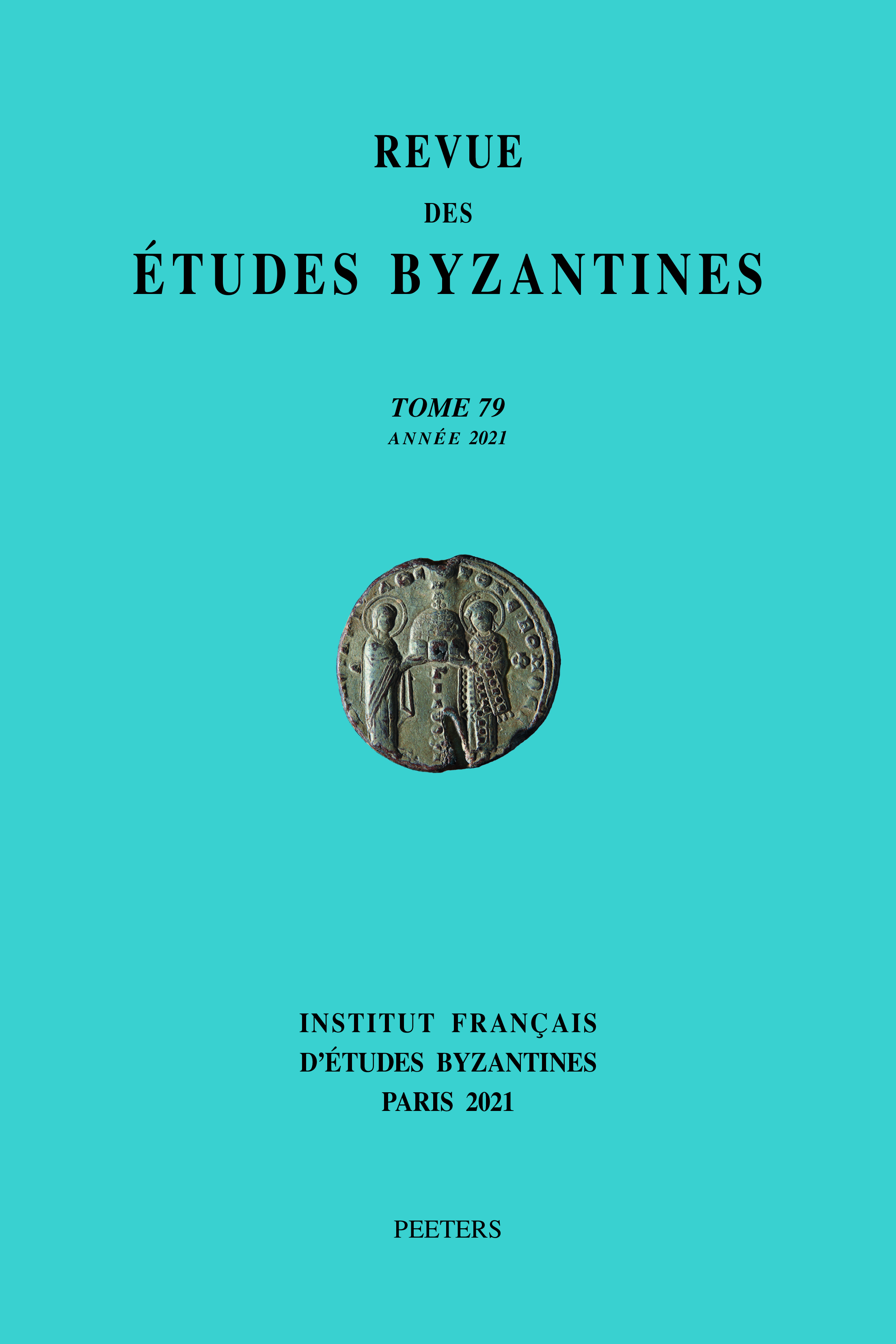 previous article in this issue previous article in this issue | next article in this issue  |

Preview first page |
Document Details : Title: Byzantine Seals from the Robert Feind Collection in Cologne Subtitle: Research and Publication in the Context of the Digital Humanities Author(s): CATALANO, Maria Teresa , FILOSA, Martina , SODE, Claudia Journal: Revue des Études Byzantines Volume: 79 Date: 2021 Pages: 297-322 DOI: 10.2143/REB.79.0.3289649 Abstract : This paper demonstrates the potential for synergy between established research methods in the field of Byzantine sigillography and the technologies provided by the Digital Humanities. More particularly, it describes the application of digital tools and solutions – primarily of text encoding standards (such as SigiDoc) and up-to-date imaging techniques (such as RTI) – to a collection of Byzantine lead seals (Collection Robert Feind in Cologne, with ca. 1700 specimina). By means of a case study it shows the benefits that RTI (Reflectance Transformation Imaging) can offer to a discipline such as Byzantine sigillography, based on the recognisability and readability of an inscribed surface, thus allowing for further investigation of both the legend and iconography of Byzantine lead seals. In its last section, it provides the first scholarly publication of a selection of ten seals from the Robert Feind Collection, which will soon be published in its entirety in digital and open-access form. L’article montre la synergie possible entre les méthodes de recherche bien établies de la sigillographie byzantine et les techniques des Humanités numériques. Plus particulièrement, il décrit l’application d’outils et de solutions numériques – principalement, des normes d’encodages des textes, comme SigiDoc, et des techniques actuelles de traitement des images, comme le RTI – à une collection de sceaux byzantins en plomb (collection Robert Feind, Cologne, environ 1700 sceaux). À l’aide d’un exemple, il montre l’utilité du procédé RTI (Reflectance Transformation Imaging) pour une discipline comme la sigillographie byzantine, fondée sur la reconnaissance et la lecture d’une surface inscrite, et ouvre ainsi à de futures recherches sur les légendes et l’iconographie des sceaux de plomb byzantins. Dans la deuxième section, l’article propose la première publication scientifique d’une sélection de dix sceaux de la collection Robert Feind, qui sera bientôt publiée dans son intégralité en version numérique et en accès libre. |
|


